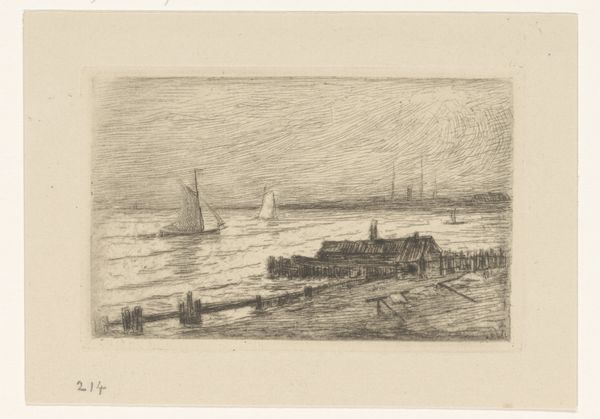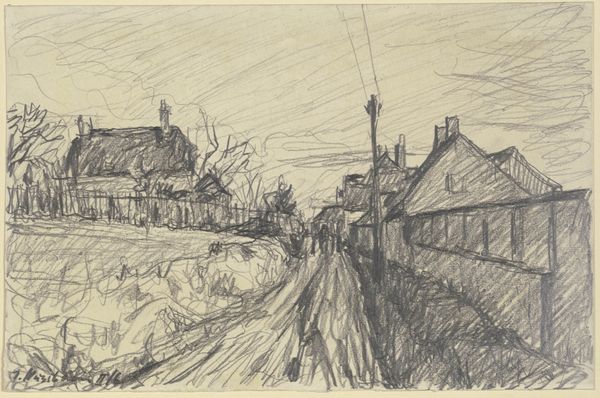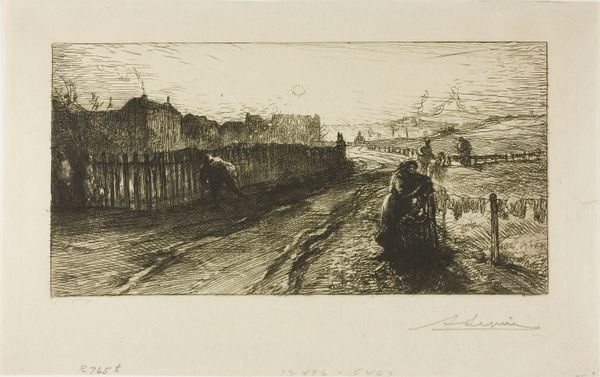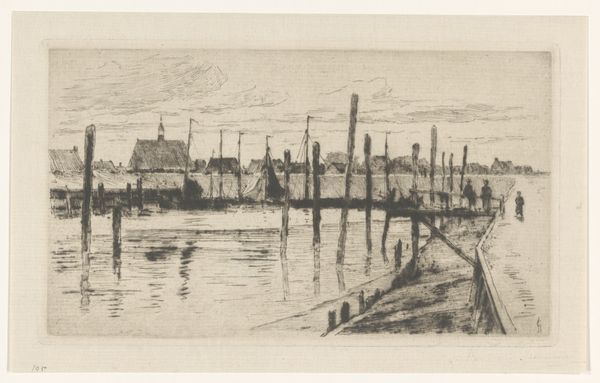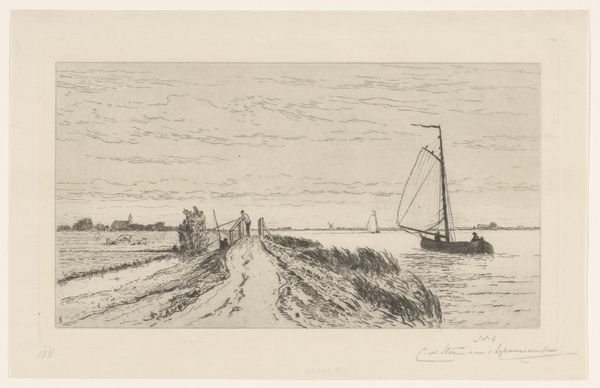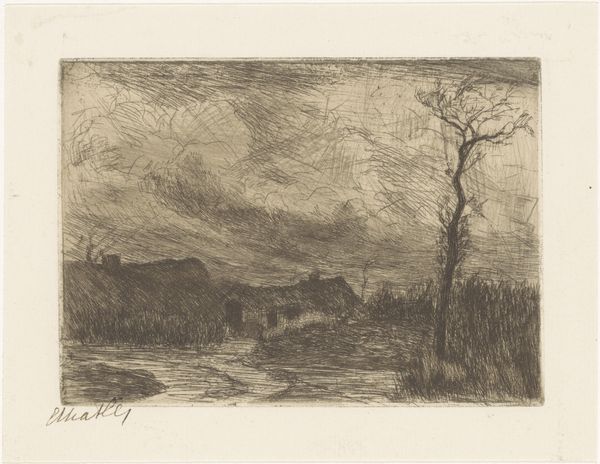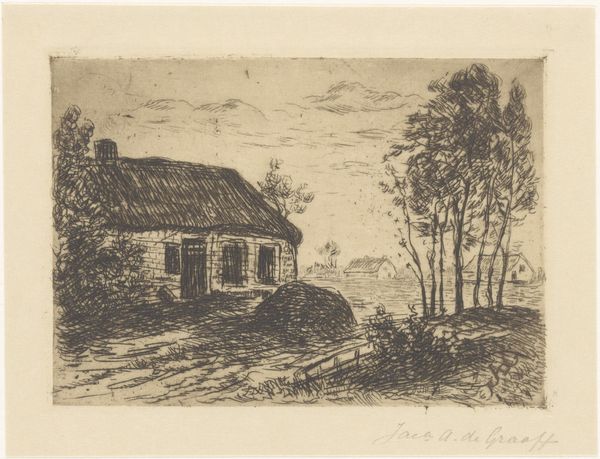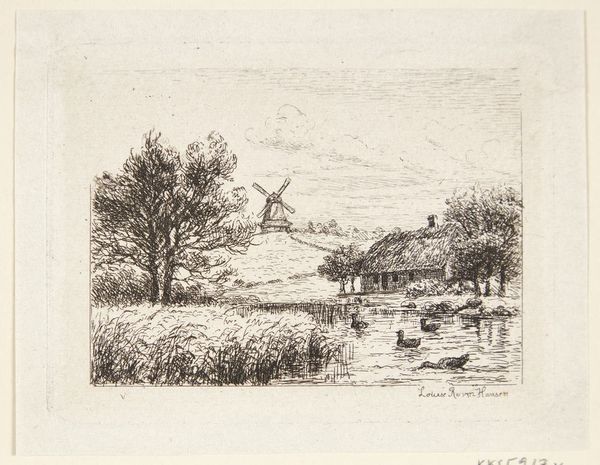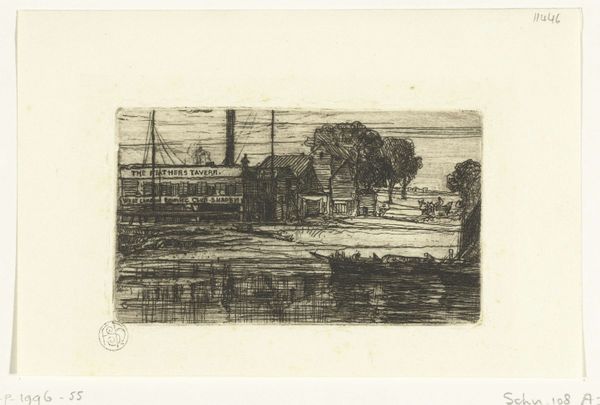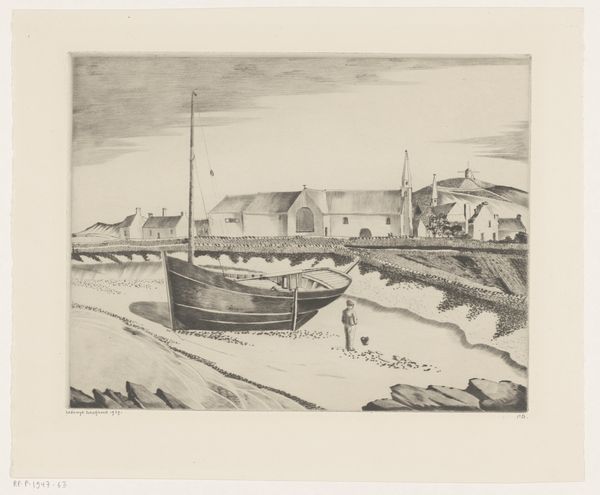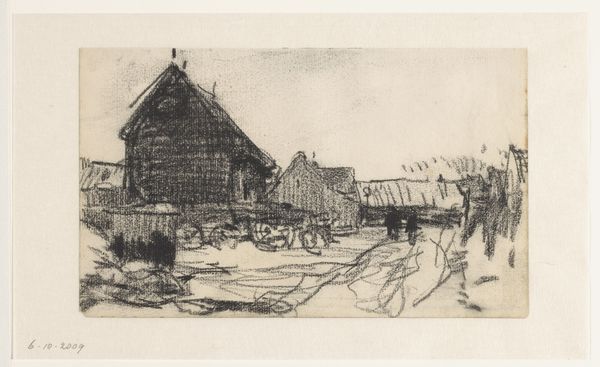
etching
#
dutch-golden-age
#
impressionism
#
etching
#
landscape
#
river
#
etching
Dimensions: height 122 mm, width 180 mm
Copyright: Rijks Museum: Open Domain
Curator: This is Carel Nicolaas Storm van 's-Gravesande's etching, "Dorpsgezicht in Kinderdijk," created around 1887. It currently resides here at the Rijksmuseum. Editor: My first impression? Quietude. It feels like a scene holding its breath. The muted tones create a certain solemnity, like a memory fading at the edges. Curator: 'S-Gravesande was quite the proponent of etching; he thought it the most immediate way for an artist to express themselves, more so than painting. He would even go out on his bike, with his etching equipment strapped to the back. Editor: And I can sense that immediacy here, in the sketchy, almost nervous lines. The way he captures the light on the water is quite beautiful. It’s interesting how the composition, with the emphasis on the waterways, speaks to Kinderdijk’s historical role. The entire place relies on water management for its very survival, it is after all famous for its windmills. Curator: Absolutely. While Impressionism informs his style to an extent, there’s also a groundedness to it. The etching, although light, focuses heavily on structures such as buildings and, what look to me like, early river defenses, reminding us of the solid presence and architectural achievements of Dutch civilisation. It grounds the dreamy aesthetic we so often associate with art of this period. Editor: Yet, at the same time, there's this lone figure walking alongside the river… almost blending in with the muted tones. They're framed by these robust buildings and a sky filled with foreboding—suggesting themes of both community and isolation? I wonder if, from a more political angle, the contrast between the strong architectural background and that figure hints at the impact urban developments were having on everyday individuals. Curator: Hmm, interesting. For me it shows that we are alone together on our own individual path despite living amongst and next to each other. Which is an interesting thought when considering Dutch painting. But, perhaps it shows we should never assume what an artist means. Maybe that is a great part of the beauty? Editor: I agree, perhaps 's-Gravesande wasn't overtly making any statement. It reminds us that context always reshapes our interpretations and we might be looking to our present for our art meaning when actually that can and will change throughout history. Curator: Precisely, like ripples from those distant boats gently disturbing the scene…art just sits there, reflecting our constantly shifting world.
Comments
No comments
Be the first to comment and join the conversation on the ultimate creative platform.
